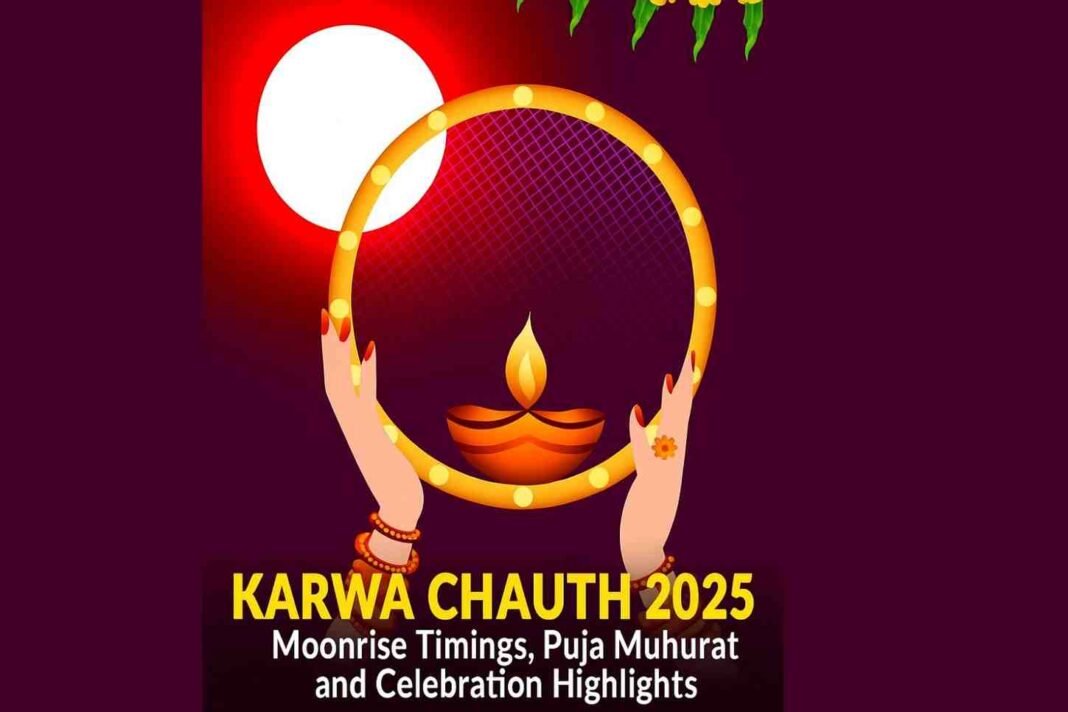Karwa Chauth 2025: Devotion, Fasting, and the Wait for the Moon
Karwa Chauth 2025 is being celebrated with great fervour and excitement across India today, as married women observe one of the most cherished Hindu festivals dedicated to love, faith, and marital well-being. The festival marks a day-long fast undertaken by women for the prosperity and longevity of their husbands. From dawn to moonrise, devotees abstain from food and water, observing rituals steeped in cultural and emotional significance.
The festive spirit is palpable across Delhi, Noida, Gurugram, and other major cities, where markets have been bustling for days. Shops are adorned with traditional attire, cosmetics, and jewellery, while mehendi artists work tirelessly to decorate women’s hands with intricate designs—a symbol of love and devotion. Sweet shops, cosmetic stalls, and traditional wear outlets are witnessing record footfall as women prepare for the grand celebration.
Tithi and Puja Muhurat Details
According to the Hindu calendar, the Chaturthi Tithi for Karwa Chauth 2025 begins at 10:54 PM on October 9 and concludes at 7:38 PM on October 10. The most auspicious time to perform the Karwa Chauth Puja—when married women offer prayers to Goddess Parvati and Lord Shiva—is between 5:57 PM and 7:07 PM on October 10. During this period, women gather in groups to listen to the Karwa Chauth Katha (story), exchange thalis, and perform the traditional rituals with utmost devotion.
Moonrise Timings in Delhi-NCR
The most awaited moment of the day—the moonrise—marks the end of the rigorous fast. According to the Indian Meteorological Department (IMD), the expected moonrise times in key NCR cities are:
-
Delhi: 8:13 PM
-
Noida: 8:13 PM
-
Gurugram: 8:14 PM
Women traditionally break their fast only after sighting the moon and completing the rituals with their husbands. The ritual involves viewing the moon through a sieve, offering water (arghya), and then taking the first sip of water from their spouse’s hands—a gesture symbolizing love, respect, and togetherness.
A Festival Rooted in Faith and Togetherness
Karwa Chauth is not just a ritual but a heartfelt expression of devotion that has been passed down through generations. While the core customs remain unchanged, the way it is celebrated has evolved over time. Social media is filled with festive posts and pictures of women dressed in elegant red and gold sarees, heavy jewellery, and vibrant makeup, making the day as glamorous as it is spiritual.
For newlyweds, this festival holds special emotional significance as many are observing their first Karwa Chauth after marriage. Families come together to celebrate, and community gatherings in temples and housing societies reflect the strong social and cultural ties that define the occasion.
Markets and Celebrations Across the Country
Across India, from bustling streets in Delhi’s Lajpat Nagar and Chandni Chowk to the vibrant shopping hubs in Noida and Gurugram, the festive rush is at its peak. Temporary stalls selling karwas (decorative pots), bangles, bindis, and pooja thalis line the streets, adding colour and charm to the festival atmosphere.
In modern times, men too have begun participating actively—helping with preparations, fasting in solidarity, and joining evening rituals. This shift signifies the evolving understanding of love and equality in relationships while preserving the traditional essence of the festival.
A Day of Beauty, Belief, and Blessings
Karwa Chauth 2025 beautifully blends tradition with modernity. While it continues to uphold its ancient customs, it also reflects the evolving spirit of Indian society—where love, faith, and companionship transcend rituals. As the moon graces the night sky over Delhi-NCR tonight, countless women will finally break their fasts, their faces glowing with relief, devotion, and the joy of togetherness.








